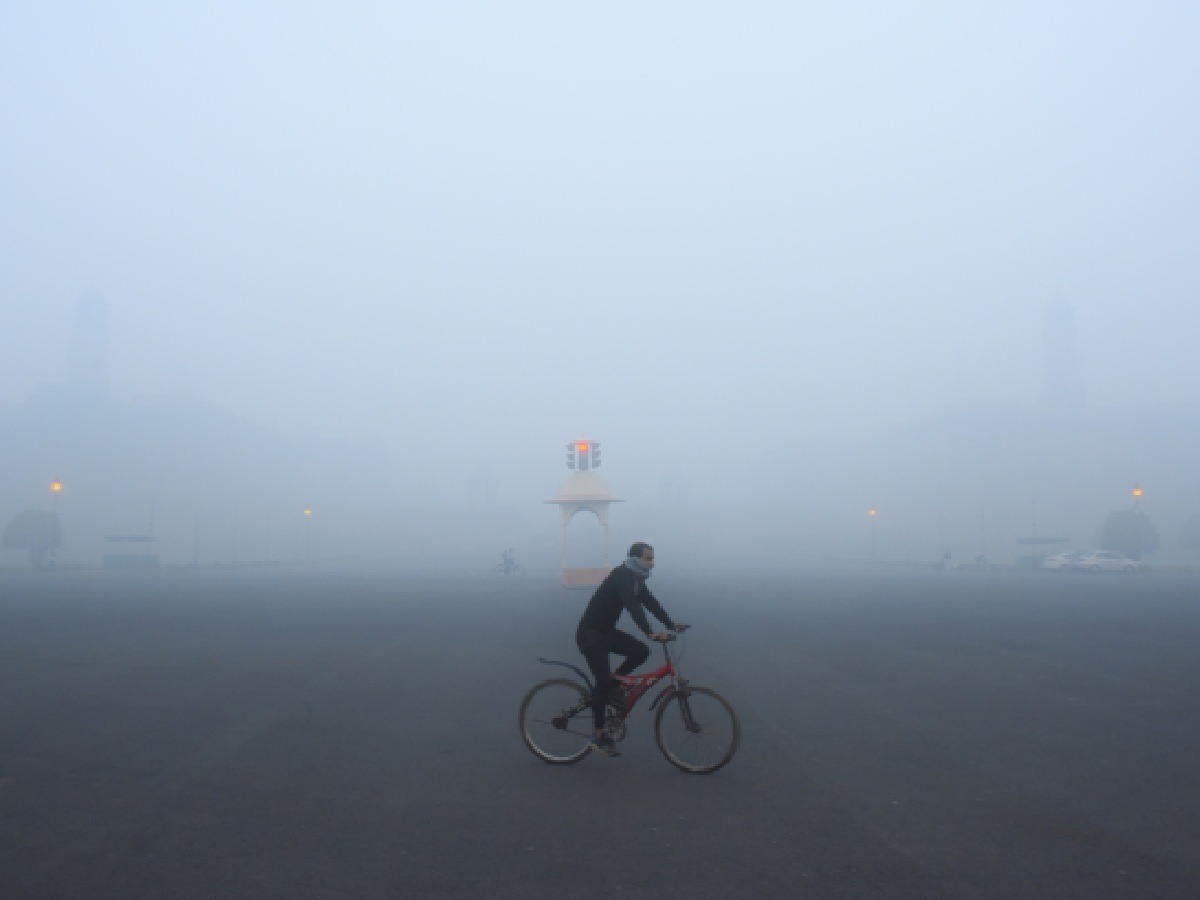
Delhi Pollution: The deteriorating air quality in the national capital has triggered a 30-40 per cent surge in respiratory cases, with children and the elderly found to be the most vulnerable.
Health experts have advised people to avoid stepping outside and minimise exposure to dust.
Delhi’s air quality has been in the ‘poor’ category for over a week.
On Wednesday morning, a thick layer of smog enveloped the national capital. At 3 pm, the city’s air quality index (AQI) stood at 367 in the ‘very poor’ category. Several monitoring stations already entered the ‘severe’ category.
Dr Arunesh Kumar, senior consultant in respiratory medicine at Paras Health in Gurugram, said, “We are seeing a sharp increase in respiratory cases, with hospitals reporting a 30-40 per cent rise. This surge is largely driven by worsening air pollution, with pollutants such as PM2.5, PM10, and nitrogen dioxide (NO2) getting trapped due to colder weather and stagnant air.” PM2.5 refers to fine inhalable particles with diameter of 2.5 micrometres or smaller, while PM10 particles have diameter of 10 micrometres or lesser, both posing serious risk to health.
Also read: Declaring Delhi’s Jama Masjid protected monument will have substantial impact, ASI tells HC
During the winter months, Delhi experiences severe pollution, driven by a combination of factors, such as low wind speeds, dropping temperatures, high moisture levels and the presence of pollution particles that act as surfaces for condensation.
Anshita Mishra, a resident doctor at Maulana Azad Medical College, said with air pollution beginning to show its impact, patients in the outpatient department (OPD) are reporting complaints such as dry cough and eye irritation. She expected such complaints to rise further after Diwali and the onset of stubble burning.
Respiratory and ophthalmic (eye related) complaints are the most common, Mishra highlighted. She advised people to wear cloth or surgical masks, minimise outdoor activities as much as possible, and refrain from burning crackers.
“Use a good sunscreen whenever going out,” she added.
“Children in metro cities like Delhi are becoming more prone to asthma and allergic reactions with each passing day, due to poor air quality,” she said.
Mishra also noted that children are developing allergic reactions as they are more sensitive to dust. Additionally, many are experiencing dermatological (skin related) issues due to the rising pollution. Speaking to PTI, Dr Mukul Mohan Mathur, a senior physician and TB specialist, highlighted a 25-30 per cent spike in respiratory issues such as asthma and bronchitis among older adults.
“Pollution aggravates latent diseases, causing severe impacts. The elderly and children quickly develop restrictive respiratory syndromes. Morning walks and outdoor exercise are especially harmful when AQI levels are near or above 300,” Mathur said.
In the OPDs, 60 to 70 per cent of the patients are reporting respiratory syndromes, he said.
“Allergies are very common at this time, and those who have asthma often develop bronchitis due to pollution,” Mathur said.
The deterioration in air quality in Delhi has prompted enforcement of Stage II of the Graded Response Action Plan (GRAP), which enforces a ban on the use of coal and firewood, including tandoors in hotels, restaurants, and open eateries, as well as diesel generator sets, except for emergency and essential services.
According to Rajat Sharma, a resident doctor at UCMS and GTB Hospital, air pollution affects not just the lungs but multiple organs.
Also read: NDMC doubles parking fees as Delhi’s air quality deteriorates to ‘very poor’
“This issue is not just about smog or respiratory problems; it’s a systemic threat. Pollutant particles, especially PM2.5, are small enough to enter the bloodstream, affecting the cardiovascular, neurological, reproductive, and endocrine systems,” Sharma said.
“We have noticed an increase in respiratory issues among patients such as shortness of breath, particularly since mid-October. Asthmatic episodes are worsening, and upper respiratory tract infections are lingering for over a week, which is a marked increase from the usual,” Sharma said.
He advised wearing an N95 mask when outdoors, stating that cloth and surgical masks are insufficient.
Dr Rommel Tickoo, director of Internal Medicine at Max Super Speciality Hospital, Saket, said, “Cases of cough, cold, and wheezing have increased due to the spike in pollution levels. We are seeing many elderly people and those with comorbidities experiencing breathing difficulties, cough, and sinusitis flare-ups. The doses of medicines and inhalers also need to be adjusted accordingly.” “Many patients are also complaining of fatigue, headaches, and insomnia. Long-term exposure to pollution can lead to chronic neurological issues as well,” Tickoo added.
A scientific committee has been constituted, which has already held meetings to recommend effective pollution-control…
He said NIA has the supervening power of taking over all the investigation, particularly in…
Delhi saw 14 murders in 15 days, with police expressing concern over the involvement of…
Vehicles without a valid PUC certificate will not be allowed to refuel at petrol pumps…
Six passengers from Bangkok were arrested at IGI Airport after customs seized over 48 kg…
Delhi Police arrest three men, a woman and a juvenile in Mukherjee Nagar stabbing; woman…